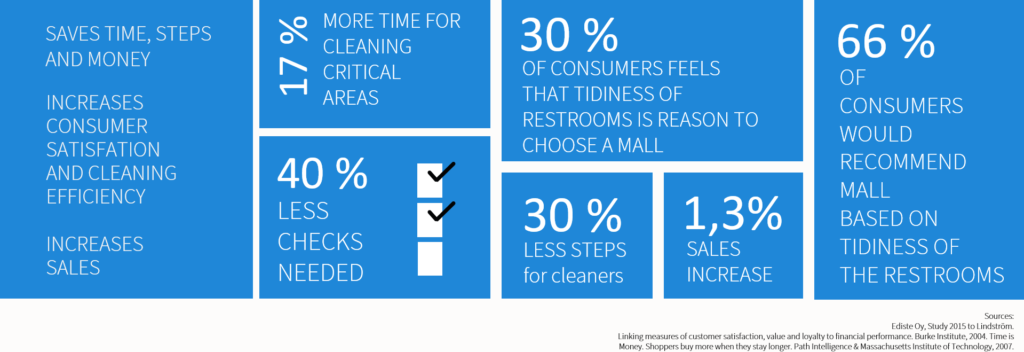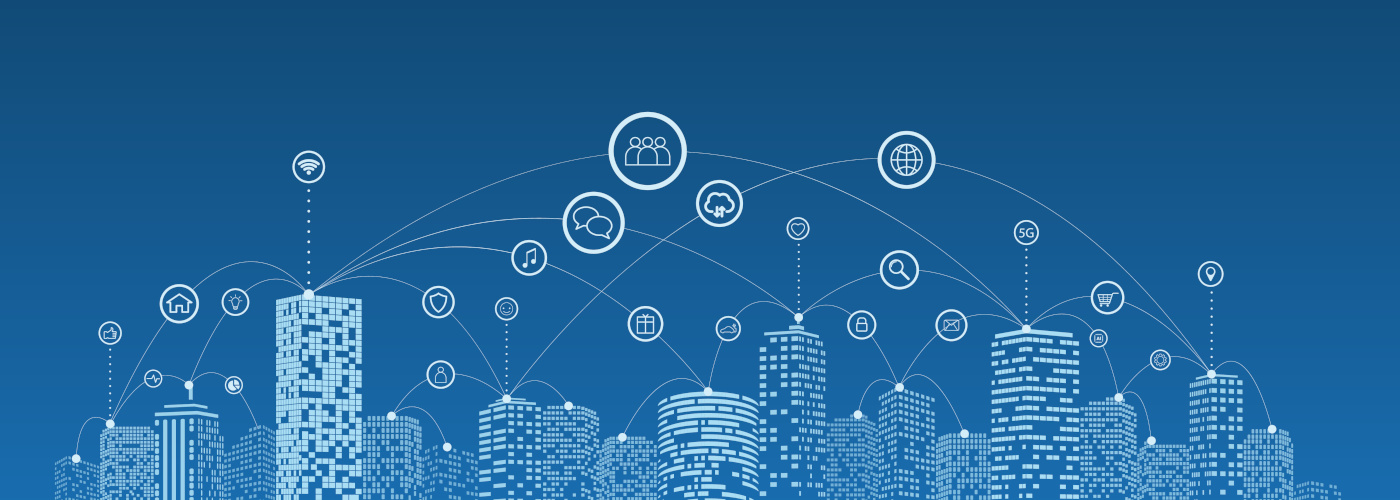IoT and smart buildings are all about data, but how is all this data used and what kind of data can you get? In this article, we share some examples of what kind of IoT data you can get in smart buildings and how it’s commonly used.
This article is part of our IoT devices guide.
Optimizing spaces with utilization data
Getting utilization data is highly important for modern facility management. Companies are always looking to create the best possible working spaces for their employees and to do that, they need to know how their spaces work. In addition, the question of space optimization and rental costs is always on every facility manager’s mind: In the 2017 Occupancy Planning Annual Report, Jones Lang LaSalle reported that most corporate real estate executives estimate that 20% of available space is wasted, and this number can be even higher!
Optimizing your space usage with utilization data helps you reorganize your spaces by giving you insights on how to maximize your space usage, improve sustainability and reduce your company’s infrastructure costs.
With utilization data, the popularity of different spaces can be determined based on facts, and thus action towards improving any under-used spaces can be taken. IoT data in smart buildings can show the popularity of different spaces in various ways: how many persons use the space on average per day, and what are the peak hours or days and so on.
With space utilization data, users can see free and occupied desks, meeting rooms and other areas. This saves time and enables activity-based working in the office.
The next step would be to find out if maybe the spaces are uninviting, have some necessary function missing or if there’s another reason people don’t want to use them.

Having utilization data is also very interesting when moving into a new space. The data can be used to test the new space on how it works, how it flows and what are the least used areas. This enables quick changes to be made so you can max out your space usage, further reducing your costs related to your real estate.
Real-time usage and occupancy analytics
Having real-time usage data from the building allows a way to improve the environmental footprint of the building. This is done by monitoring the HVAC system and the electricity usage in the building.
When a room is not being used, there is no need to have the air conditioning keeping that room to a nice and chilly temperature. This energy can be saved or used to boost the air conditioning in other rooms, where it is actually needed.
Real-time usage data has a great use case in facility management. Determining the most popular rooms with their peak hours and days enables, for example, automated heating and air conditioning optimization. This reduces the energy needed in the building.
IoT utilization data can also help you prepare for unusual times: During COVID-19, companies with access to space utilization data have not just been able to set occupancy limitations to their spaces, but they also have been able to monitor this to ensure the safety of their employees.
Smart cleaning
The same idea applies to smart cleaning. When using occupancy information, there is a clear way to keep the most used spaces clean. Shifting from a schedule-based cleaning to a more need-based cleaning saves time and money and helps to ensure a higher standard of hygiene.
As with the utilization data, the real-time usage and occupancy data of a space can be used for COVID-19 protocol enforcement. The occupancy data is very useful in spaces with a raised need for hygiene, such as in restrooms or hospitals. The time between in which the rooms have been used is very handy in helping to keep the building hygienic.
Fill level data and monitoring
Monitoring the fill levels of paper, towel and soap dispensers, as well as trash bins, is most commonly used in smart cleaning solutions. With fill level monitoring, the cleaning staff needs to do fewer unnecessary checks, saving time and steps while the users can always rely on having a well-stocked dispenser in their facilities.
Here are some findings from textile service company Lindström on their Flowability washroom solution:

Download our smart washroom whitepaper & learn more
Environmental data
With IoT devices, you can get a variety of environmental data from your smart building. Getting environmental data on your spaces helps you make sure your spaces offer healthy and safe conditions for the users, enables them to find areas best suited for them and helps facility managers to keep track of heating and air conditioning needs.
Environmental data in buildings can be air quality, temperature, air pressure or illuminance for example.
Indre Semeskeviciute, a business consultant in the Smart Building industry, wrote an article on the most common technologies used in smart buildings, read it here:
What are the common technologies in IoT devices?
Indoor tracking
Using IoT devices data in smart buildings can also enable indoor tracking. In this context, indoor tracking can be either the location of the workforce or the location of certain equipment. When considering the use case in location tracking for employees, it should always be a voluntary sharing tool.
Indoor tracking enables finding colleagues, allowing for better communication with them and cooperating better with team members and coworkers. It is especially neat when you need to find someone outside of your regular team, as you may not know where they usually sit. When using location tracking, the users can see who is around at the office for different tasks, and maybe find some company to grab lunch with.
Location tracking in smart buildings is usually done with keycards, tags or Bluetooth-enabled trackers people always carry with them. The data is then displayed on a digital twin of the office.
As mentioned earlier, in addition to finding people, indoor tracking can be used with certain equipment. It might be that some of this equipment is critical to find and therefore needs to be tracked within the building, or that you want to monitor your inventory levels with the solution. Using indoor tracking for equipment can also help you understand equipment usage better and reduce the risk of loss and theft.
Conclusion
IoT data has a multitude of use cases in smart buildings. Whether you want to optimize your space usage or track critical equipment, IoT data makes all this possible.
But before data starts to stream your way, the factor of cost needs to be considered. Take a look at how the total cost of ownership is determined in smart solutions:

